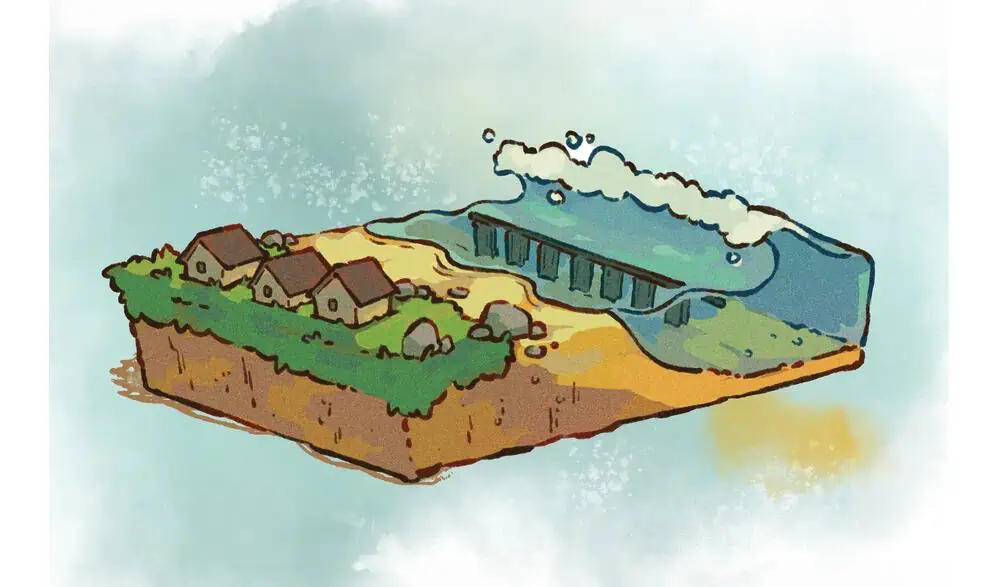Engineers from the Massachusetts Institute of Technology have designed an artificial reef that mimics the wave-buffering effects of coral reefs and provides pockets for marine life.
The structure could dissipate more than 95 percent of incoming wave energy using a small fraction of the material normally needed.
According to MIT Professor Michael Triantafyllou:
“This would be like a long wave-breaker. If waves are 6 meters high coming toward this reef structure, they would be ultimately less than a meter high on the other side. So, this kills the impact of the waves, which could prevent erosion and flooding.”
While some regions have created artificial reefs using sunken ships or assembled configurations of concrete, metal, tires, and stones, that variability in the types of artificial reefs means there aren’t any standards for engineering such structures.
The MIT team instead looked for ways to engineer an artificial reef that would efficiently dissipate wave energy with less material, while also providing a refuge for fish living along any vulnerable coast.
Triantafyllou said:
“Remember, natural coral reefs are only found in tropical waters. We cannot have these reefs, for instance, in Massachusetts. But architected reefs don’t depend on temperature, so they can be placed in any water, to protect more coastal areas.”
Details of the engineered reef were reported in a paper appearing in the journal PNAS Nexus.

